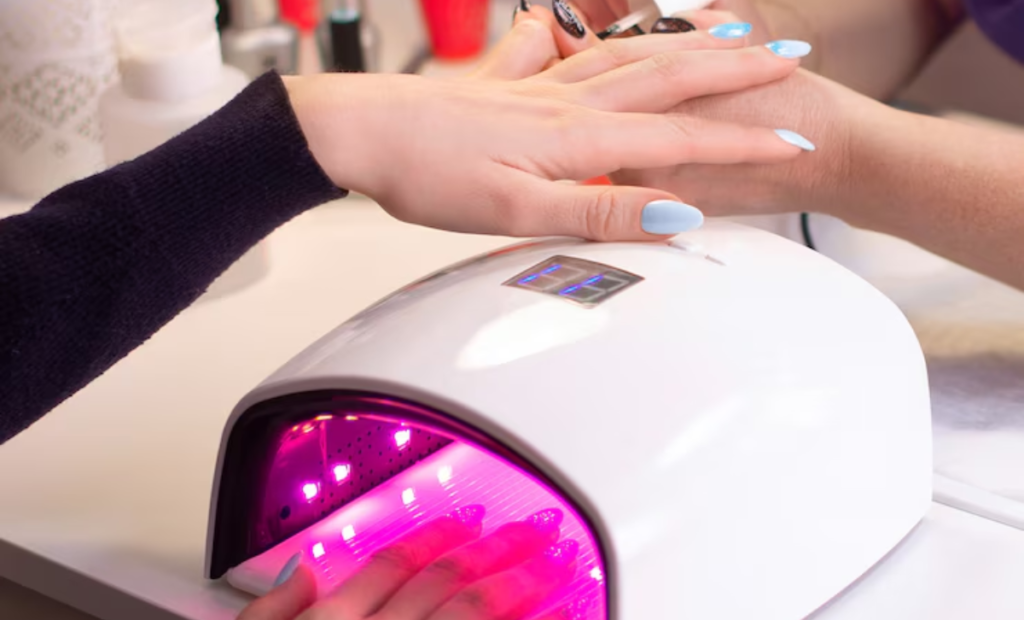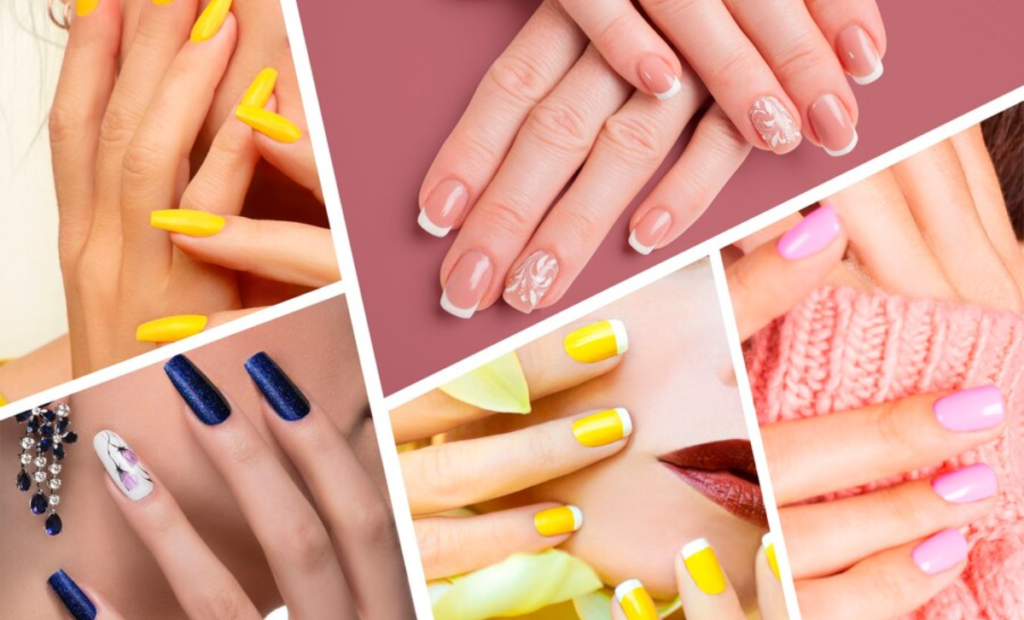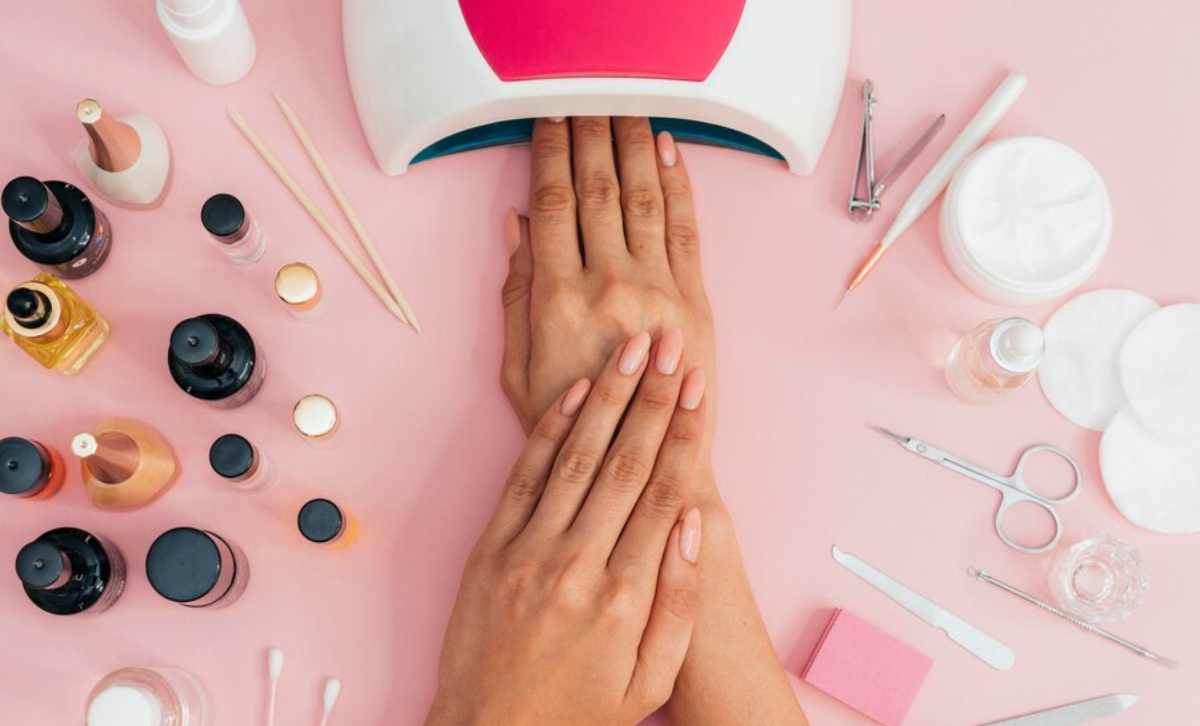Ever stared at your freshly painted nails only to find them chipped and dull just days later? Gel manicures might be exactly what you need. These innovative nail treatments have revolutionized the beauty industry with their remarkable durability and glass-like shine that lasts for weeks, not days.
From busy professionals to vacation-goers to special occasion prep, gel manicures have become the go-to solution for those who want beautiful nails without constant maintenance. But before you book your appointment or invest in an at-home kit, you should know plenty about this popular nail enhancement option.
In this comprehensive guide, we’ll dive into everything gel manicures offer in 2025—from understanding the science behind that perfect cure to breaking down realistic costs and maintenance expectations. We’ll address common concerns about exposure and nail health while providing expert advice on maximizing benefits and minimizing potential damage. Whether you’re a gel manicure veteran looking to level up your knowledge or someone considering making the switch from traditional polish, this guide will help you navigate the colorful world of gel nails with confidence.
What Is a Gel Manicure?

Gel manicures use special polish that requires curing under UV or LED lamps to create a chemical bond with your natural nail. Unlike regular polish that dries through air exposure, gel formulas harden instantly when exposed to these specialized lights, preventing smudging and creating a much stronger finish.
The process involves careful nail preparation, followed by application of a base coat, colored gel, and top coat, with curing between each layer. This meticulous application creates that mirror-like shine and impressive durability that makes gel manicures so popular worldwide.
How Long Do Gel Manicures Last?
A professionally applied gel manicure typically remains flawless for two to three full weeks without chipping or dulling. This extended wear period makes them perfect for vacations, special events, or busy periods when nail maintenance isn’t convenient.
Your lifestyle significantly impacts how long your gel manicure will last, with factors like frequent hand-washing, cleaning chemicals, and manual tasks potentially shortening wear time. Regular application of cuticle oil and wearing gloves during household chores can help maximize longevity.
How Much Does A Gel Manicure Cost?
Standard gel manicures in the United States typically range from $30 to $60, depending on your location and the salon’s positioning. Metropolitan areas and luxury spas might charge $50-80, while budget-friendly nail shops may offer services for $25-35.
Additional nail art, designs, or special techniques will increase the price, with elaborate hand-painted designs potentially adding $10-30 to your base price. While the upfront cost exceeds regular polish, many clients find the extended wear time makes gel manicures more economical overall.
What To Know About Gel Manicures

First-time gel clients should know the appointment takes longer than traditional manicures, typically 45-60 minutes from start to finish. The process is more involved and requires precise application and curing of multiple layers.
Removal requires proper technique and should never be forced or peeled off, as this damages your natural nails. Most salons include removal in the price of a new application, but expect to pay $10-15 for standalone removal services.
Gel Nails vs. Shellac Nails
Though often confused, gel nails and Shellac nails have distinct differences worth understanding before your appointment. Shellac is a brand name owned by CND that combines traditional polish with gel properties, while “gel” refers to various formulations from different companies.
Shellac typically provides a thinner, more natural appearance but slightly less durability than traditional gel products. The removal process for Shellac is generally gentler and faster, making it preferable for those concerned about nail health.
Professional vs At-Home Gel Manicure
Professional gel services offer expertise, proper curing times, and salon-quality results that are difficult to replicate at home. Technicians have specialized training and access to professional-grade products that often outperform retail versions.
At-home gel kits require an initial investment of $50-100 but save money long-term for regular gel wearers. While convenient, DIY application demands practice, steady hands, and attention to detail to achieve salon-quality results.
Are Gel Manicures Safe?
The primary safety concern with gel manicures involves UV exposure from curing lamps. While the risk is relatively low with limited exposure, you can minimize it by applying broad-spectrum sunscreen before appointments or wearing specially designed UV-protective gloves.
Modern salons increasingly use LED lamps, which cure faster and emit significantly less radiation than traditional UV lamps. This technological advancement has addressed many of the earlier safety concerns associated with gel manicures.
Can Gel Manicures Damage Your Nails?
Gel manicures themselves don’t inherently damage healthy nails when applied and removed properly. The damage typically results from improper removal techniques, such as peeling, picking, or aggressive filing and scraping during the removal process.
Taking breaks between gel applications allows your nails to recover and breathe. Many professionals recommend scheduling gel-free periods of 1-2 weeks every few months to maintain optimal nail health and assess any changes in your natural nails.
How to Safely Remove a Gel Manicure
Professional removal is always the safest option, but you can remove gel at home with the right approach. Begin by gently buffing the top layer of polish, then soak cotton in pure acetone, place on nails, wrap with foil, and wait 10-15 minutes.
The gel should slide off easily with gentle pressure from an orangewood stick after proper soaking. Never forcibly scrape or peel off resistant gel – simply continue soaking rather than risking nail damage from excessive force.
Aftercare
After gel removal, focus on intensive hydration and strengthening treatments for your natural nails. Apply cuticle oil daily and use nail-strengthening products containing ingredients like keratin, biotin, or vitamin E to restore flexibility and health.
Give your nails a recovery period by keeping them polish-free for at least 24-48 hours after removal, allowing them to rebalance and absorb nourishing treatments. This simple step significantly impacts long-term nail health for regular gel wearers.
Benefits Of Gel Manicures
Gel manicures provide exceptional durability for active lifestyles, withstanding daily activities that would quickly damage traditional polish. This resilience makes them particularly valuable for people who work with their hands or participate in sports regularly.
The instant-dry feature eliminates the frustration of smudged manicures, allowing you to resume normal activities immediately after your appointment. This convenience factor, combined with the long-lasting results, explains why many clients remain loyal to gel manicures despite the higher cost.
How To Maintain Your Manicure
Extend your gel manicure’s life by applying cuticle oil daily, which prevents the gel from becoming brittle and helps minimize lifting at the cuticle area. Wear gloves when cleaning, washing dishes, or working with chemicals that might compromise the gel’s integrity.
Avoid using your nails as tools for opening packages or scratching labels, as this puts excessive pressure on the free edge where gel is most likely to chip. Small behavioral changes like these can easily add several extra days to your manicure’s lifespan.
What To Know About Gel Manicures
First-time gel clients should communicate clearly with their technician about nail goals and any previous nail issues. Being transparent about your lifestyle and expectations helps your manicurist customize the service to your specific needs.
The growing popularity of gel manicures has led to significant product innovations, including “breathable” gel formulas that allow more oxygen transfer to the natural nail. These newer options may be worth exploring if you’ve experienced sensitivity with traditional gel products in the past.
How To Remove A Gel Manicure Properly
Begin removal by gathering all necessary supplies: pure acetone, cotton pads, aluminum foil, a nail file, orangewood sticks, and cuticle oil. Create a comfortable setup in a well-ventilated area to minimize acetone fume exposure during the process.
After removal, immediately rehydrate your nails with oil or rich hand cream to replenish moisture lost during the acetone soaking. This crucial step maintains nail flexibility and prevents the brittleness that can lead to breakage after repeated gel applications.
2025 Trendy Spring Nail Designs

This spring’s hottest gel trends include “glazed donut” finishes featuring subtle shimmer and chrome effects that catch the light beautifully. These sophisticated, neutral-based styles work well in both professional environments and casual settings.
Nature-inspired designs dominate 2025 spring trends, with soft watercolor florals and abstract botanical patterns being particularly popular. The season’s color palette features muted sage green, lavender gray, and milky blue tones that offer a modern twist on traditional spring pastels.
How to Get Beautiful Nails: The Dos and Don’ts
DO maintain regular professional maintenance every 2-3 weeks and use daily cuticle oil to keep your gel manicure looking fresh. This consistent care prevents lifting and extends the life of your manicure while supporting your natural nail health.
DON’T skip proper removal processes or attempt to peel off gel polish when it begins to lift. This common mistake is responsible for most nail damage associated with gel manicures and can take months to repair.
Choosing the Right Gel Color for Your Skin Tone
Selecting the perfect gel color involves more than just following trends – understanding your skin’s undertone helps you choose shades that naturally complement your hands. Those with cool undertones (bluish veins, silver jewelry looks best) typically shine in jewel tones, blue-reds, and purples, while warm undertones (greenish veins, gold jewelry looks best) are enhanced by earthy tones, orange-reds, and warm pinks.
Neutral skin tones have the most flexibility, looking balanced in virtually any color palette. If you’re unsure about your undertone, nude polishes that match your skin tone are universally flattering and provide a sophisticated, lengthening effect that works beautifully in professional settings.
Gel Manicures for Special Occasions
Wedding gel manicures deserve special consideration since they’ll appear in photographs and need to withstand the emotional day. Schedule your appointment 1-2 days before the event rather than the same day to allow time for any adjustments and to ensure the manicure has properly settled.
For significant events like graduations, job interviews, or milestone celebrations, consider more subdued designs that won’t distract or appear dated in photos years later. French manicures with a gel twist remain timeless, while subtle shimmer adds festivity without overwhelming your overall look.
Seasonal Considerations for Gel Manicures
Summer heat and humidity can sometimes affect gel application and wearing experience. The increased moisture and temperature may cause lifting to occur slightly sooner than in cooler months, particularly if you spend significant time swimming or sweating.
Winter’s dry air presents different challenges, often causing the skin around your nails to become dehydrated and cuticles to crack. Combat this by increasing your hand moisturizing routine and applying cuticle oil more frequently during colder months to maintain your manicure’s fresh appearance.
Troubleshooting Common Gel Manicure Problems
If you notice bubbling in your gel polish, this typically indicates either oil residue on the nail before application or that the gel layer was applied too thickly. Quality technicians prevent this by thoroughly cleansing the nail plate and applying thin, even layers.
Premature lifting at the cuticle area often results from application too close to the cuticle, where natural oils can prevent proper adhesion. A small gap between the polish and cuticle (about the thickness of a credit card) provides better wear without sacrificing the appearance of your manicure.
The Psychology of Nail Care
Many people underestimate the psychological benefits of well-maintained nails. Regular gel manicures can serve as a form of self-care that boosts confidence and provides a consistent grooming ritual that helps you feel polished and put-together regardless of other life circumstances.
The transformation that occurs during a nail appointment offers a tangible before-and-after experience that provides immediate gratification. This visible improvement can trigger positive feelings and a sense of control even when other aspects of life feel overwhelming or chaotic.
The Future of Gel Manicures
The gel nail industry continues to evolve with innovative formulations addressing previous concerns. Recent advancements include more flexible gel formulas that move naturally with the nail, reducing the risk of cracking and lifting while providing better wear for active individuals.
Sustainability has become a growing focus, with brands developing gel polishes free from harsh chemicals like formaldehyde, toluene, DBP, camphor, and formaldehyde resin. These “cleaner” options appeal to health-conscious consumers who want the benefits of gel without unnecessary chemical exposure.
Final Thoughts
Gel manicures have transformed the nail industry by offering a practical solution that balances beauty with convenience. When properly applied and maintained, they provide weeks of flawless wear that traditional polish simply cannot match. The key to enjoying all the benefits while minimizing potential drawbacks lies in making informed choices about application, removal, and nail care between services.
As with any beauty treatment, moderation and proper technique make all the difference. By finding a skilled technician you trust, communicating your expectations clearly, and following proper maintenance routines, gel manicures can become a sustainable part of your beauty regimen without compromising nail health.
Remember that healthy, natural nails form the foundation for beautiful gel manicures – prioritize their care above all else, and you’ll enjoy the best possible results from every gel application. Whether you’re new to gel manicures or a longtime enthusiast, the evolving technology and increasing focus on nail health promise an exciting future for this beloved beauty treatment.
Also Read:https://fashivine.com/influencers-gone-wild/
FAQ’s
How often should I get a gel manicure?
For optimal nail health and appearance, schedule gel manicures every 2-3 weeks. This timing allows for proper removal and fresh application before excessive lifting occurs. Going longer than 3 weeks can lead to problems like lifting.
Will gel manicures make my natural nails stronger?
Gel manicures don’t strengthen natural nails, but they do provide a protective layer that prevents breaking and splitting while wearing them. For actual strengthening, use targeted treatments during breaks between gel applications.
Can I extend my gel manicure at home if it starts chipping?
You can extend a gel manicure by carefully filling in grown-out areas with matching regular polish, followed by a clear top coat over the entire nail to blend the repair.
Is it OK to get gel manicures year-round without breaks?
Most nail professionals recommend taking breaks from gels every 3-4 months to assess nail health and apply intensive treatments. Schedule a 1-2 week gel-free period to allow your nails to rebalance and recover.
What’s the biggest mistake people make with gel manicures?
The most damaging mistake is peeling or picking off gel polish instead of proper removal. This action physically removes layers of your natural nail along with the gel, leading to thinning, weakness, and breakage that can take months to repair.
Raabia is a passionate content writer specializing in creating engaging, SEO-optimized content that connects with audiences and drives results. With a knack for storytelling and a focus on clarity, Raabia crafts content across various niches, including fashion, lifestyle, and more.doing work with different websites,2 years experience.







